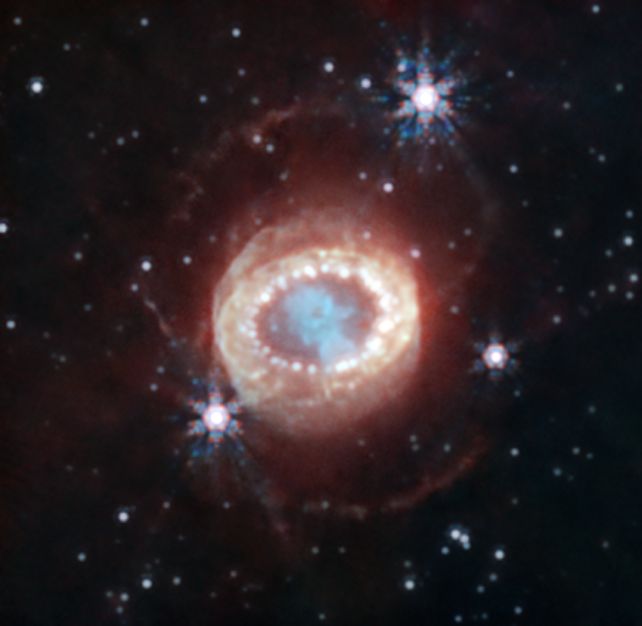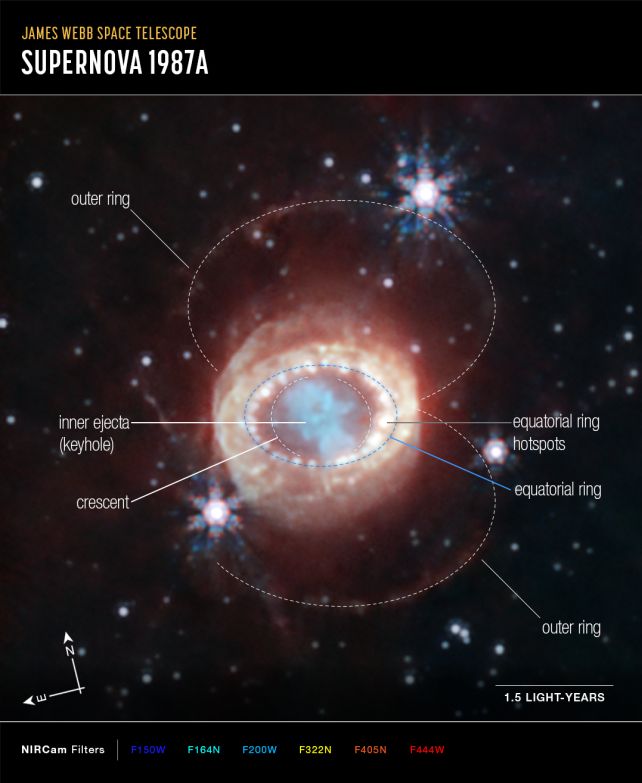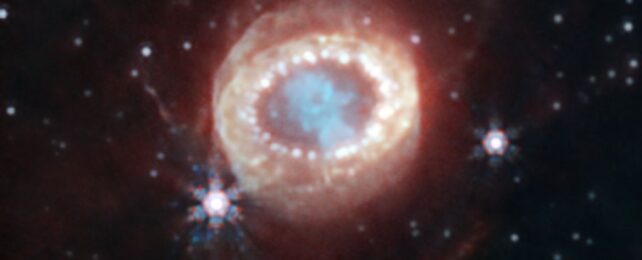The golden compound eye of the most powerful space telescope ever built has given us new insight into a star we saw exploding just 36 years ago.
In the intervening years, scientists have avidly watched the development of SN 1987A as it bloomed from a blaze of light first seen in February 1987 to a fully fledged supernova remnant. At a distance of just 168,000 light-years, ensconced in the Large Magellanic Cloud that orbits the Milky Way, the object has given us unprecedented insight into the evolution of a core collapse supernova.
We've looked at it through every possible wavelength, from radio to gamma. Now the James Webb Space Telescope has taken a gander in near-infrared, and the new observations have revealed never-before-seen structures in the burgeoning cloud of exploded star guts.

We know a few things about SN 1987A already, given how much we've looked at it. Its ejecta has an hourglass structure erupting from the central star; it appears oval to us because we're looking at it almost down the end of one of the lobes.
In the center, there's a very dark, keyhole-shaped blob. This is a clump of dust so dense that not even JWST can detect light traveling through it. Evidence suggests that it conceals the remnant of the star that exploded, now a type of neutron star known as a pulsar.
A bright ring surrounds the star; this is thought to ring the equator, and forms the waist of the hourglass. Bright spots in the ring are hot shocks that were generated when material from the supernova slammed into material around the star that had already been shed as it reached the end of its life.
Within the ring, though, JWST spotted something that has never been detected in any previous observations: strange crescent-like structures.

"These crescents are thought to be a part of the outer layers of gas shot out from the supernova explosion," NASA explains in a post on its JWST website.
"Their brightness may be an indication of limb brightening, an optical phenomenon that results from viewing the expanding material in three dimensions. In other words, our viewing angle makes it appear that there is more material in these two crescents than there actually may be."
JWST views the Universe in infrared and near infrared, which doesn't scatter off dust the same way shorter wavelengths do. This means in many cases the telescope is capable of seeing through dusty regions to reveal what's inside.
In the case of SN 1987A, however, the central dust is so thick even JWST couldn't penetrate it with these observations. So we're still yet to directly find the neutron star that exploded so beautifully, 168,000 years ago.
The telescope will continue to take observations of the supernova, to track its evolution in detail, and hopefully one day find the missing star.
You can download the new image of SN 1987A in full resolution from the JWST website.
